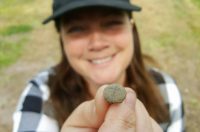 Last May, metal detectorist Louise Stahlschmidt found some melted lumps of bronze and round bronze artifacts she called “buttons” while exploring a farmed field in Trompgård, north Jutland, Denmark, for the Vendsyssel Historical Museum. She called in her finds and sent pictures. Museum curator Jeppe Boel Jepsen reacted with unprintable enthusiasm when he saw the “buttons” were red enameled bronze fittings characteristic of an Iron Age wagon burial.
Last May, metal detectorist Louise Stahlschmidt found some melted lumps of bronze and round bronze artifacts she called “buttons” while exploring a farmed field in Trompgård, north Jutland, Denmark, for the Vendsyssel Historical Museum. She called in her finds and sent pictures. Museum curator Jeppe Boel Jepsen reacted with unprintable enthusiasm when he saw the “buttons” were red enameled bronze fittings characteristic of an Iron Age wagon burial.
The museum immediately secured funding for an excavation of the site, but they had to wait for the crops to be harvested and for the weather to cooperate, so it was winter before they were able to follow up on the exciting discovery. They also needed to enlist the aid of a cadre of amateur archaeologist volunteers like Louise Stahlschmidt without whom the museum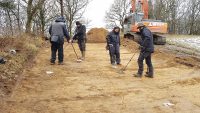 could never cover enough ground for a thorough exploration with the limited time and money at its disposal.
could never cover enough ground for a thorough exploration with the limited time and money at its disposal.
When they finally were able to excavate the site, they found the melted fittings from the carriage. The wagon had been set on fire at the time of the burial, hence the oddly shaped lumps Stahlschmidt had found.
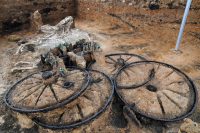 The carriage is a rare prize, the stuff that Danish archaeologists dream of on their most feverish nights. It is a Dejbjerg type carriage, named after the first discoveries of their kind, two wagon burials unearthed by archaeologist Henry Petersen in Dejbjerg Præstegårdsmose, western Jutland, in 1881 and 1883. The early Iron Age wagons were manufactured between 300 B.C. and 100 A.D. somewhere in southeastern Europe, where they are more frequently found, and imported into what is now Denmark. Only eight of them have been found in Denmark and northern Germany combined.
The carriage is a rare prize, the stuff that Danish archaeologists dream of on their most feverish nights. It is a Dejbjerg type carriage, named after the first discoveries of their kind, two wagon burials unearthed by archaeologist Henry Petersen in Dejbjerg Præstegårdsmose, western Jutland, in 1881 and 1883. The early Iron Age wagons were manufactured between 300 B.C. and 100 A.D. somewhere in southeastern Europe, where they are more frequently found, and imported into what is now Denmark. Only eight of them have been found in Denmark and northern Germany combined.
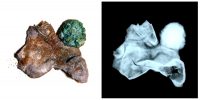 The carriages alone were of immense value when they were burned and buried, and this burial was laden with grave goods — a drinking horn, a drinking glass, bronze kettles, a game board with glass playing pieces, a gold ring, fragments of silver that may have been part of drinking cups of the Boscoreale type, only three of which have been found in Denmark before — which make it one of the richest graves from the transitional period between the pre-Roman and Roman Iron Age ever discovered in Denmark.
The carriages alone were of immense value when they were burned and buried, and this burial was laden with grave goods — a drinking horn, a drinking glass, bronze kettles, a game board with glass playing pieces, a gold ring, fragments of silver that may have been part of drinking cups of the Boscoreale type, only three of which have been found in Denmark before — which make it one of the richest graves from the transitional period between the pre-Roman and Roman Iron Age ever discovered in Denmark.
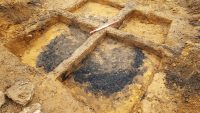 The team had to search far and wide with their metal detectors to find more artifacts pointing to the central grave site where the people were buried. At the last hour of three days of searching, they found the grave. Alas, someone had beaten them to the punch in antiquity — the grave was looted — but there were intriguing remains including the hole made by the digging of the original grave, the remnants of cremation and a piece of burned human leg.
The team had to search far and wide with their metal detectors to find more artifacts pointing to the central grave site where the people were buried. At the last hour of three days of searching, they found the grave. Alas, someone had beaten them to the punch in antiquity — the grave was looted — but there were intriguing remains including the hole made by the digging of the original grave, the remnants of cremation and a piece of burned human leg.
After the fire went out, the excavations were collected together with the burned leg of the grave and placed in an oven. The oven has been set in the grave and the fire pit covered. After an unknown period, the tomb has been restored, and the grave has since been moved to a village just a few hundred meters from the grave. This building has previously been partially studied by the museum. This iron age village was simultaneously detected by the detector with the detector, and parts of the burial equipment were also found on this site. Thus, this is a family that reinforces their possessions, their status and their relations with other elite families beyond Europe, at an ancestral cave, not only by the tombs but also at the settlements.